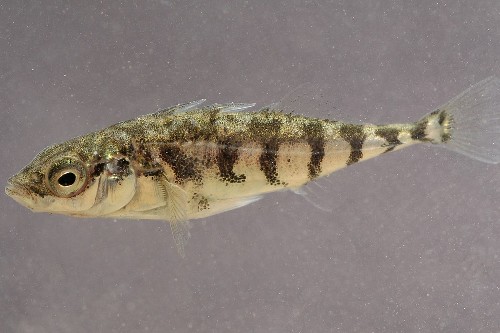
Three spined stickleback Wikimedia Commons
Animals using the most efficient methods of searching for resources may well pay with their lives, scientists at the University of Bristol have discovered.
The findings, published today in Behavioural Ecology, reveal why animals may not always use a searching strategy that maximises results.
How animals move through their habitat, particularly in search for food, is a major question in biology, and has application in how animals will respond to environmental change.
Numerous studies have demonstrated that a special kind of movement, known as Lévy motion, increases the ability to find resources because it includes long-distance moves between areas being searched, as well as periods of concentrated searching in one area. It has also been shown that a range of animals use this kind of movement.
This study is the first to demonstrate a potential cost of Lévy motion in an experiment, showing prey using Lévy motion are targeted twice as often as prey using Brownian motion – the movement observed in molecules in a gas, and thus a baseline expectation.
Professor Christos Ioannou from Bristol's School of Biological Sciences explained: "We show that this is because the predators prefer to target prey that are moving with straighter paths of motion, possibly because this makes the future position of the prey more predictable."
Professor Ioannou and his team used a virtual prey approach. They developed a computer simulation of the prey which are identical in size, colour, speed etc but differ in how they turn.
The video was then played to stickleback fish in a tank by projecting the video onto a translucent screen. This allowed the fish to see the prey, and for researchers to capture and record their choices.
"By using an experimental design that presents virtual prey on a screen to real predators, we can control everything about the prey and isolate the variable we're interested in - here, movement - while also using real animals," continued Professor Ioannou.
This study demonstrates that prey animals might not always use a searching strategy that maximises finding a resource because there might be costs that were, previous to the study, unknown. This might explain why some studies have found animals use different kinds of searches other than Lévy motion.
He added: "Our study shows, for the first time, that animals using a common and very effective way of searching for resources may actually pay a cost of being more susceptible to predators.
"Going forward, we want to look at whether the prey of sticklebacks show Levy or Brownian motion.
"More broadly, our study predicts that prey animals should be less likely to demonstrate Lévy motion than apex predators."
Paper:
'Virtual prey with Lévy motion are preferentially attacked by predatory fish' by Christos Ioannou et al in Behavioural Ecology.






